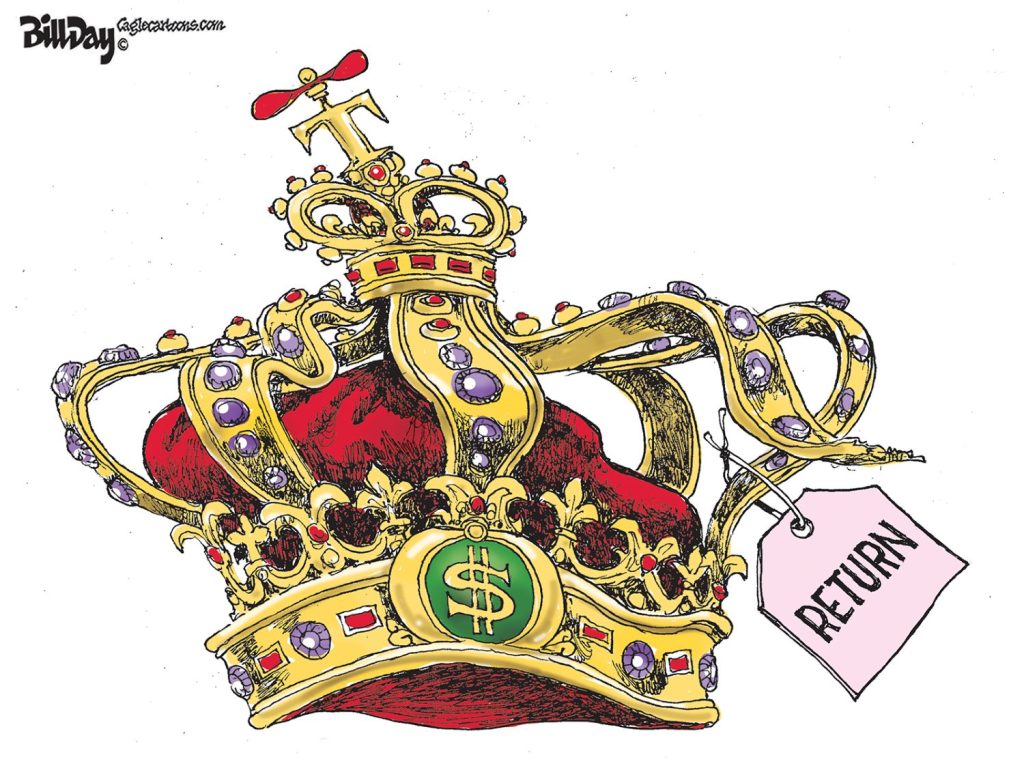The 3,000 residents of Boxtown on the east side of the Horn Lake Cutoff in southwest Memphis know something big is happening on the 522 acres on the west side of the Cutoff at the site of Elon Musk’s massive xAI supercomputer.
What the residents of the long-struggling, low-income neighborhood likely don’t know is the rate they pay for electricity is much higher – 85% – than the richest man in the world’s AI project.
But it’s not just Boxtown. Although the imbalance in electricity rates there brings the issue into stark relief, there are 89 other industries in Shelby County besides xAI that also pay a rate lower than residential customers.
It’s a fact of life built into the preferential treatment that Tennessee Valley Authority gives to industrial customers, a disparity that a former board chairman called a betrayal of the federal utility’s founding principles.
It’s also a reality glossed over in TVA’s public statements and news releases which for decades have stressed it treats every customer the same. In its public statements, TVA regularly side steps questions about its industrial rate altogether, subtly shifting the responsibility to local utilities like Memphis Light, Gas and Water.
Meanwhile, MLGW suggests the basis for the disparity begins with the differing electricity rates TVA charges in the first place.
TVA spokesperson Julia Rowe puts it this way: “TVA sets the wholesale rates and the local power companies pass those on. Local power companies have the ability to add their own charges on the retail level.”
In Memphis and Shelby County, those charges added by MLGW do nothing to narrow the gap between industrial and residential customers caused by TVA.
The disparity is undeniable: the rate residential customers is almost two times the rate paid by industrial customers. The question it raises is why so few questions are raised about the potential of making it more equitable.
It is a disparity that is “concerning, predatory, and indefinitely not acceptable” to District 3 City Council member Pearl Walker, co-chair of the Council’s MLGW committee, newest board member of Southern Alliance for Clean Energy, and board member of the new Green Bank.
The Tale of the Tape
Here’s the math from Doug McGowen, President/CEO of MLGW, who has been open and responsive to answering questions about this issue. The following cost is for a megawatt hour of electricity:
- $55 of MLGW’s $62 rate for industrial customers is TVA’s wholesale cost
- $86 of MLGW’s $116 rate for residential customers is TVA’s wholesale cost
He said the “wholesale power cost collected by MLGW for TVA” amounts to the following percentage of the total revenue for each group of customers:
- Industrial – 90%
- Residential – 74.2%
This means MLGW adds an additional 10% charge for industrial customers but 26% for MLGW’s residential customers.
It’s a gap in charges that Mr. McGowen chalks up to the more complicated infrastructure required for residential customers. “In short, residential electric use is very ‘peaky’ relative to the way we collectively live compared to industrial consumption which is a much more steady load,” he said, describing the final MLGW rate as “the wholesale cost of power – set by TVA – and the cost to distribute that power -set by MLGW.”
However, TVA says MLGW can make the local rates whatever it wants. That leads a former utility executive to say that an option for MLGW – and TVA, for that matter – would be to subsidize –or lower – the residential rate. He contends that action would be more in keeping with TVA’s founding purpose when it was created in 1933 than how it’s treating industrial rates today.
Such a suggestion gets pushback from TVA, which has said in the past that increasing costs to industries would drive them out of the Tennessee Valley, taking jobs and economic activity with them. However, the massive federal utility doesn’t apply the same principle when talking about the rate charged to the people living in the Tennessee Valley.
No Respect for Public’s Right to Know
The disparity concerns Council member Pearl Walker because “we have one of the highest energy burdens in the country and citizen morale is low for so many thousands of Memphians. We do not need something like this to add to the ugly side of the city’s legacy that reeks with racism, lack of integrity, and accountability to its citizens.”
Trying to unsnarl TVA’s history and the rationale for its industrial rate leads into cul-de-sacs and blind alleys where incomplete, if not misleading, explanations, claims of proprietary information, and missing historical milestones are currency of the realm.
The federal utility – a public agency created by the U.S. Congress – even routinely turns down Freedom of Information Act requests that obscure basic transparency and accountability. After a TVA vice-president refused to provide details on how much it had reduced electricity bills for companies receiving incentives, an exasperated City Council member Chase Carlisle said: “You have to be careful when you use terms like public to your benefit, but then you don’t disclosure information to the public.” U.S. Congressman Steve Cohen even had to propose legislation in hopes of getting TVA to give him answers to salary questions he asked.
To complicate things even more, TVA has non-compete clauses – a strange legal agreement for a federal utility corporation that’s a monopoly – in its contracts with local power companies, many of which, like MLGW, are public agencies. TVA has even refused to report its rates to Congress although the TVA Act required it.
It seems inarguable that non-compete clauses and non-disclosure agreements fly in the face of the obligations of a public agency and prevent City Council’s adequate and open oversight of MLGW, a division of City of Memphis government.
MLGW’s monthly bills do not reflect the residential rate customers are being charged for electricity and of course there is no indication that there are customers who pay a lower rate. MLGW, to its credit, said it will respond to a FOIA request and prepare and release a list of industrial customers as requested.
Obfuscation to the Extreme
TVA’s customary emphasis on secrecy comes in the wake of it approving a 5.25% electric base rate increase this year and a 4.5% increase last year. In news releases and “annual performance reports,” TVA cloaks the almost 10% increase in only two years in a blizzard of buzzwords and numbers but never manages to state what the new base rates are.
Even news media reports with the heading, “The Tennessee Valley Authority increases base rate again; largest increase in two decades,” don’t include the base rate and only a few reported that the increases were approved without any public documentation indicating why they were needed.
It was no coincidence that the increase stopped just one-half of a percent before 10%. That’s because TVA’s contracts with local power companies stipulate that if it increases the base rate by more than 10% over a five-year period, local power companies can renegotiate their contracts with TVA.
Dr. Stephen A. Smith, executive director of the Southern Alliance for Clean Energy, said that no other utility the size of TVA is allowed to approve such a sizable rate increase with limited public information. “Only in an Orwellian world of misinformation do we see your nation’s largest ‘public’ power utility pass a massive rate increase while providing the public the least amount of information when compared to ‘private’ utilities.”
TVA’s political maneuverings should come as no surprise to anyone who watched its vast PR and lobbying campaign to prevent Memphis from mounting an honest, impartial process to evaluate other sources of electricity. Despite former mayor Jim Strickland’s own consultant slamming the process and calling for a new RFP to be issued and armed with studies showing savings in hundreds of millions of dollars in one of the country’s poorest cities, MLGW has all but stonewalled jumpstarting a process to get the definitive answer for Memphians and Memphis City Council members falter in pushing the trigger themselves.
Residential Customers Was Supposed To Be The Priority
The TVA Act Section 83 states that its work “shall be considered primarily for the benefit of the people of the section as a whole and particularly the domestic and rural consumers to show the power can economically be made available, and accordingly, that sale to and use by industry shall be a secondary purpose.”
That why the late David Freeman, former TVA board chair, said it flies in the face of TVA’s founding mandate to “improve the lives of low-income families with cheap electricity,” and even contended that residential customers are being used to subsidize industrial customers. “For 70 years or more, TVA earned the love and affection of people in the Tennessee Valley Authority, and now behind closed doors, they are doing just the opposite of what the TVA Act requires,” he said.
“As TVA became less of a public power entity, it became increasingly less transparent when it comes to industrial customers,” Dr. Smith said. “The industrial rate was created to subsidize low residential rates, but industrial customers started lobbying TVA and threatened to move to other states. It resulted in sweetheart deals from TVA. After all, industrial customers have unique access to TVA and to local utility companies like Memphis Light, Gas and Water and that helps explain the sweetheart rates.”
Until TVA changed the method it uses to determine fuel costs – one of the largest components of TVA’s rate – from an average cost basis to the resource cost allocation, all types of customers paid the same price for fuel costs.
That was upended by the change.
TVA’s new rate structure was promoted as revenue neutral overall, claiming it increased residential rates by about 0.4% while reducing rates for industrial customers by 3.6%. A 2018 study by Synapse Energy Economics Inc., Electricity Prices in the Tennessee Valley, found that TVA had actually been collecting an extra 5% per kilowatt hour from residential customers since 2011 while decreasing industrial rates by 20%.
The change amounted to savings of about $1.4 billion from 2011-2016 for industrial customers, when compared to residential customers, who paid an extra $110 on average in just 2016. Synapse Energy Economics estimated that in 2016, residential customers paid $429 million more than if the rate had been shared equally.
MLGW Defends Itself
Incredulously, TVA’s president at the time contended that the change in methods “doesn’t really cost any of the other customers of TVA anything.” It’s a reminder that TVA, unlike other large utilities, is not accountable to any regulatory oversight for its rate decisions and has no oversight for such claims.
Dr. Smith added: “TVA is hiding the ball on how it’s manipulating rates to the advantage of big industrial customers at the expense of families and small businesses.”
Although the additional charges added to the TVA rates make the gap between residential and industrial customers even larger, Mr. McGowen disputes any suggestion that residential customers are subsidizing industrial customers. He said: “That is not fair to say.”
He said the disparity in rates is not uncommon in public and private utilities across the U.S. and pointed to data of the U.S. Energy Information Administration in support of his position. The data there is heavy in private utilities – 72% of electricity customers – so it’s not clear about the practices of public utilities.
More information about MLGW rates and added costs would be shown in its cost of service study, but Mr. McGowen said it is not complete. A cost of service study is essential in breaking down the total cost of providing electricity to different classes of customers, and offers a way to determine if a utility is allocating costs and rates fairly. It is a fundamental tool for City Council to evaluate MLGW’s utility rates and justification for them.
In lieu of the study, Mr. McGowen said: “MLGW’s cost to serve varies among class based on the complexity and quantity of infrastructure necessary to serve that class of customer. In short, there is significantly more infrastructure per KWh necessary to serve residential customers when compared to the infrastructure per KWh necessary to serve industrial customers.”
He said that a 5MWh industrial customer can be served with a single circuit, 103 step down transformers, and a single run of utility poles all served by one or two circuit breakers. The same amount of electricity can serve 4,500 to 5,000 homes and typically require four or five circuits, more than 1,000 transformers, hundreds of poles, plus dozens of laterals with fuses and switches, and multiple circuit breaks in each substation.
As for the xAI supercomputer, it will ultimately consume more than 270 megawatts and use an amount of electricity that is equivalent to 100,000 homes. TVA has a demand response system that pays some industries to cut consumption when the electrical grid is stressed but refuses to release the names of the companies although TVA recently hinted that xAI is part of the program.
The Rush To Judgement
As the supercomputer relentlessly is pushed ahead, TVA will likely continue to act like it’s largely impotent when it comes to xAI and shifts political heat to MLGW. At its most recent meeting, TVA president/CEO Jeff Lyash, said: “We have an obligation to serve our customer. Here, it’s MLGW who serves xAI. Our obligation is to serve. We can’t say no.”
Meanwhile, MLGW is seen by many to have taken on a role as cheerleader for the project. It has disappointed environmental groups who no longer see it as an honest broker in representing the public that ensures that they receive impartial answers to their questions and concerns.
xAI has been called a “bull in the china shop” since its project was announced for Memphis. It has generated high-fives among Chamber officials while engendering angst and irritation among many disturbed by Mr. Musk’s childish behavior, political heavy-handedness, source of conspiracies and disinformation, and history of thumbing his nose at local regulations.
In a sense, he is the same source of divisiveness in our community that he has proven to be on a national level.
But more than anything, he reminds us that the old adage remains true: Money talks.
Just ask the people in Boxtown – and yourselves – when you next pay your MLGW bill.
**
Join me at the Smart City Memphis Facebook page and on Instagram where these blog posts are published along with occasional articles, reports, and commentaries that are relevant to Memphis.





